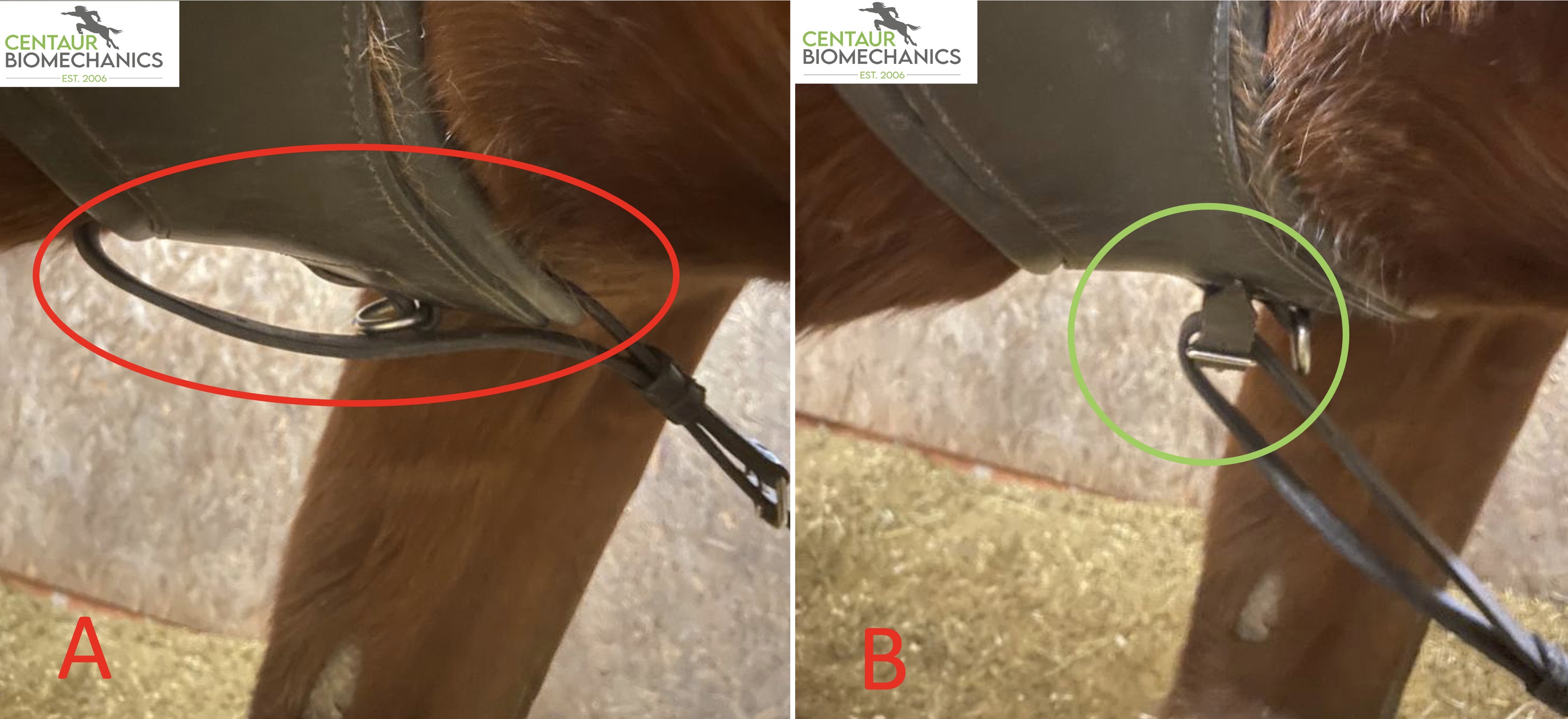
Previously we have discussed the effect that girth fit, and design can have on pressure distribution and equine locomotion. In brief we have demonstrated that areas of high girth pressures are localised to the regions behind the elbows, and not on the sternum as some may have first thought (1, 2). We have also shown that these pressures were directly related to limb movement, with peak pressures occurring during the stance phase of the forelimbs (1, 2). It is important to note, that these pressures occur every stride and in all gaits.
Although we have shown that girth pressures are highest behind the elbows and not the sternum, we must consider the effect that the girth-martingale-girth interface (or breastplate/other training aids with a girth attachment) has on the girth pressures. Here with particular attention to the pressures caused by the martingale loop, attaching the martingale to the girth. Depending on girth design, martingales generally wrap around the girth, and as a result form two hard edges between the girth and the horse. This as you can imagine, can lead to areas of high pressures…. similar to you wearing a belt and then placing a piece of leather beneath it. We must be mindful of wrapping things around the girth, here a martingale loop, as this will create localised high pressures in the sternal region.
These localised pressures are of a magnitude thought to cause discomfort. In our girth research, we demonstrated that girth pressures had an effect on locomotion (1, 2), by modifying the girth, reducing girth pressures was associated with altered limb movement. Applying the same principles, horses may develop a locomotor strategy to alleviate any discomfort caused, here by the martingale-girth interface.
The purpose of this blog is not to advise on the removal of all martingales. If used correctly, martingales can serve a purpose, however we must consider the martingale-girth-horse interface. Some girths now come equipped with a ring and or clip (B) on the external aspect of the girth, this is useful as it means that the martingale loop can be attached to the ring or clip, and removes the need to wrap the loop around the girth (A) which of course eliminates the sternal pressures caused by the martingale loop.
NB: If you do alter the attachment of the martinglae, it is most likely that the martingale will need to be refitted.
I hope this is of interst.
Please like / follow our page for more blogs and please share to raise awareness.
Dr. Russell MacKechnie-Guire
Centaur Biomechanics
Previous blogs http://www.centaurbiomechanics.co.uk/blog/
#equineresearch #biomechanics#centaurbiomechanics #veterinarymedicine#equinephysiotherapy#equinetherapist #onlinecourses #onlineseminar
1. Murray R, Guire R, Fisher M, Fairfax V. Girth pressure measurements reveal high peak pressures that can be avoided using an alternative girth design that also results in increased limb protraction and flexion in the swing phase. Vet J. 2013;198(1):92-7.
2. R. Murray; V. Fairfax; M. Fisher; T. Pfau and R. MacKechnie-Guire. Girth design in galloping racehorses influences limb kinematics, under-girth pressures and force distribution. BEVA Congress 2021. https://beva.onlinelibrary.wiley.com/.../evj.10_13492...